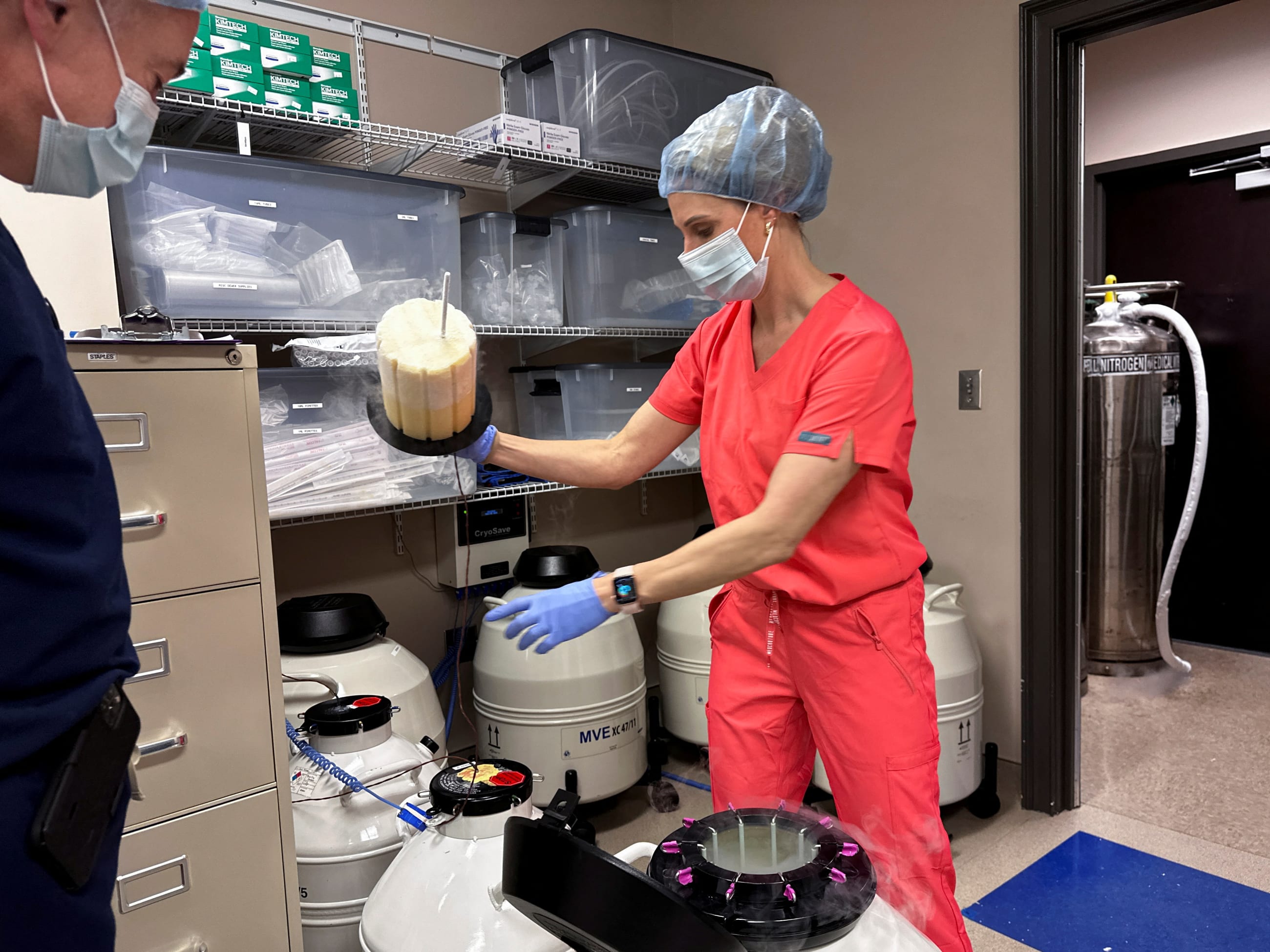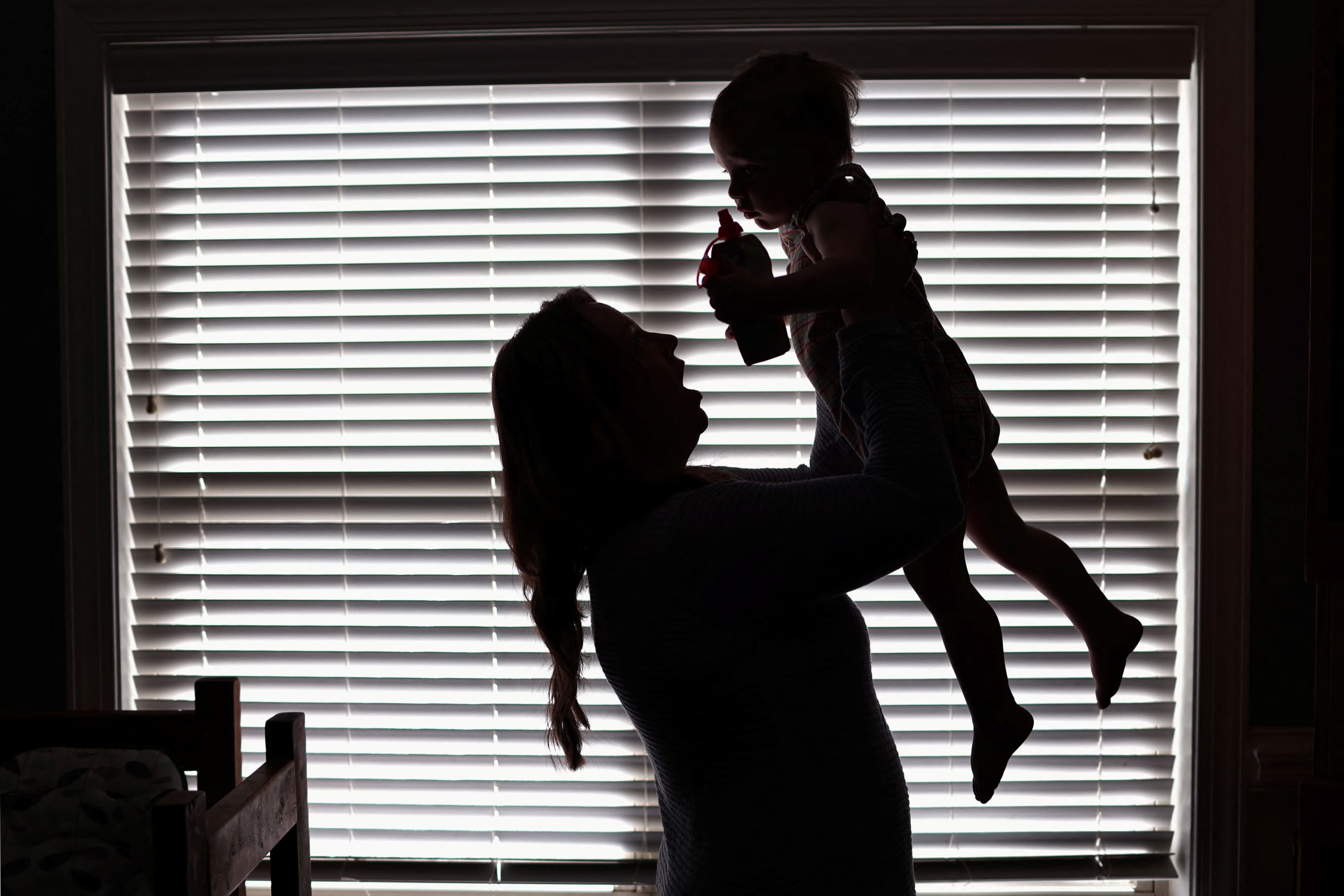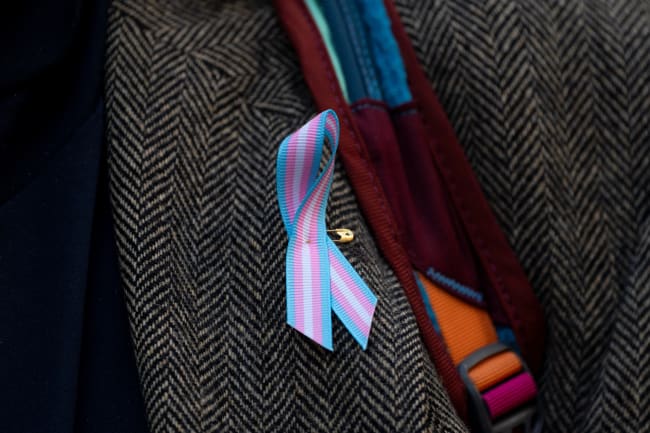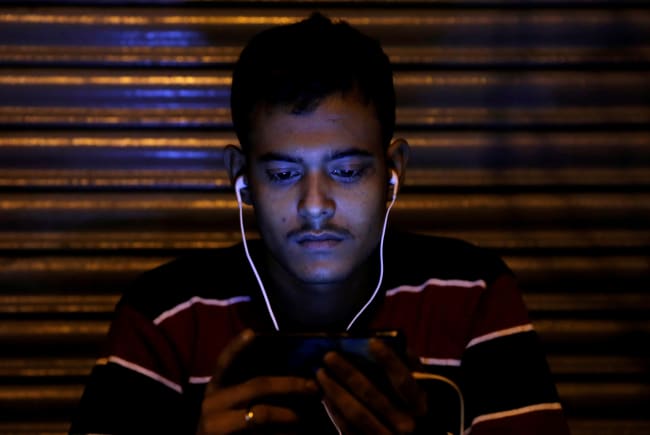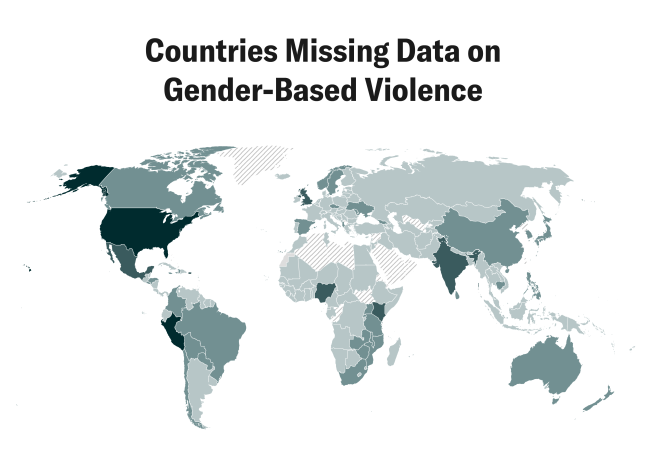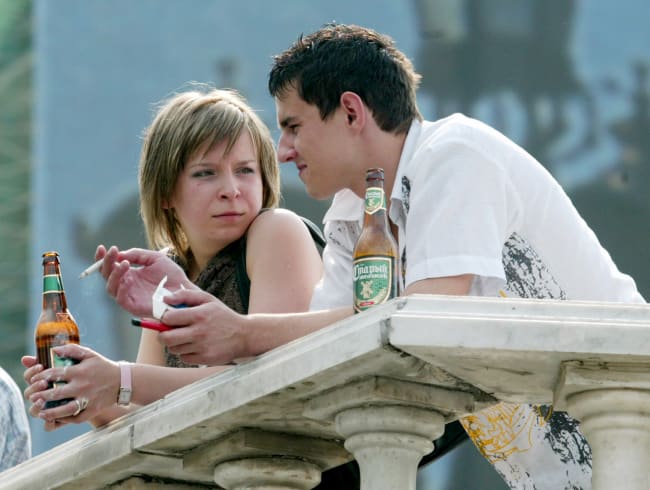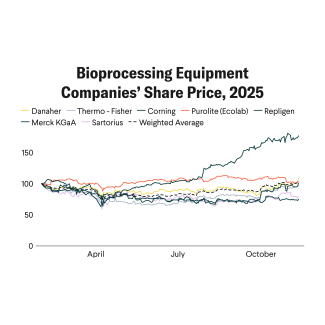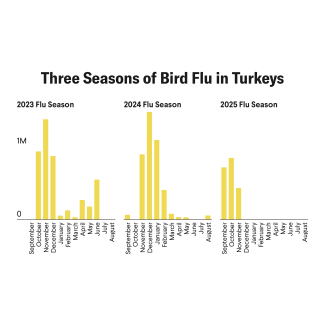In 2001, Sindy Wei, a 25-year-old woman attending graduate school in California, decided to supplement her PhD stipend by exchanging her eggs for $6,500 (about $11,000 in 2025). Wei, who is now a radiologist at the University of California, Los Angeles, figured that donating her eggs could earn her extra money and help someone else build their family. At the time, Wei was unaware of the long-term medical risks that come with the process of egg donation.
After her doctor surgically harvested close to 60 eggs from her ovaries—three times more than the typical retrieval of 20 oocytes (eggs)—Wei collapsed and nearly bled to death after the procedure nicked an artery. That donation nearly cost Wei her life. She was also left with unexplained infertility.
When Wei decided to start her own family, nearly a decade later, she needed intrauterine insemination before eventually giving birth to twins. Twenty-four years later, she still suffers bladder spasms from her emergency surgery.
Wei says that her postdonation infertility wasn't captured in any patient database. The clinic didn't maintain contact with her.
"If I had not spoken out, I don't think most people would really know how these things could happen," she says.
Wei's experience isn't unique. University of Alabama anthropologist Diane Tober says too many stories like Wei's go unreported because donors are considered vendors, not patients, within the lucrative U.S. human egg market. Unlike in other nations, such as Spain, where a donor's number of cycles and heritable conditions are tracked, no federal registry exists for U.S. egg donations.
"To go through a process like this and to not know that these are potential outcomes is the height of irresponsibility [on the industry's part]," Tober says.
The Financial Incentives Behind Human Egg Donation
Nearly 13.4% of American women [PDF] struggle to conceive or carry a pregnancy to term. This reality coincides with women increasingly choosing to delay pregnancy [PDF] into their 30s and 40s. By the time women are ready to start their families, many discover their aging eggs prevent them from conceiving naturally. More prospective parents are turning to donor eggs to create their families, giving rise to a booming industry. In 2024, the U.S. donor egg market was valued at $400 million. That figure is forecast to rise to $520.5 million by 2030.
Commercial egg donation—in which agencies recruit, screen, and match healthy donors with prospective parents—optimizes the number of eggs retrieved per donor. A woman donating her eggs begins by taking birth control pills to regulate her menstrual cycle. Then she injects herself over 8 to 14 days with the follicle stimulating hormone along with leuprolide—a synthetic hormone that halts the donor's natural hormone cascade—to stimulate her ovaries into releasing 20 or more eggs at a time. After that, doctors pierce the donor's vaginal wall with an ultrasound-guided needle and collect the eggs from her swollen ovaries. Once the eggs are successfully retrieved, the donor is compensated and sent home. Apart from a follow-up phone call, a clinic typically does not contact the donor again.
Targeted advertisements entice college students, some as young as 18, to supply eggs to prospective parents for anywhere from $10,000 to $120,000. Certain donors, such as those of Asian descent, or who major in science, technology, engineering, or mathematics at college, are marketed as elite and receive the highest compensation for their eggs.
But Tober says that women are misled into believing egg donation is a low-risk procedure because clinics don't typically disclose how little research has studied its potential long-term consequences.
The Debate Over Safety
To shed light on the risks that donation poses, Tober partnered with members of the support group We Are Egg Donors in 2013 to fight a California bill that proposed that scientists pay women up to $5,000 for their eggs for research purposes. Although the bill was ultimately passed by Governor Gavin Newson in 2019, Tober argued that the risks of egg donation were unknown, which made meaningful consent challenging. She worried that women would be swayed by financial need.
"I was just floored at how little research there was on egg donors," Tober says.
She set out to do the research herself, surveying nearly 1,000 U.S. and Spanish egg donors over 10 years. She recruited her subjects from multiple donor agencies, fertility clinics, and social media. In 2024, she published her findings in her book Eggonomics: The Global Market in Human Eggs and the Donors Who Supply Them.
Tober examined the incidence of a fertility drug-triggered condition called ovarian hyperstimulation syndrome (OHSS) that causes abdominal bloating, nausea, and vomiting. In severe OHSS cases, ovaries can balloon to five times their usual size, leading to abdominal pain, fluid retention, and blood clots.
Tober reported that 64 of 617 U.S. donors—10.3%—experienced severe OHSS symptoms. Another 1.62% were hospitalized with critical OHSS symptoms—kidney failure and cardiovascular collapse—after at least one donation cycle. Nineteen women described ovarian torsion—a condition when a woman's engorged ovaries twist on themselves, cutting off their blood supply.
Fertility specialists insist that the body of evidence proves egg donation is safe
In 2023, Tober published a study in the Journal of Assisted Reproduction and Genetics that surveyed 289 egg donors across 801 cycles. Per cycle, nearly 1 in 10 reported severe OHSS symptoms.
Fertility specialists insist that the body of evidence proves egg donation is safe.
"IVF [in vitro fertilization] has been around for 40 years. Egg donations have been around for over 20 years. I don't think we're missing anything from an egg donor research standpoint," counters reproductive endocrinologist Aimee Eyvazzadeh, who is based in the San Francisco Bay Area.
Brian Levine, a Manhattan fertility specialist who has worked with egg donors for more than 15 years, finds Tober's claims hard to fathom. "That's crazy," says Levine. "I really would have concerns about the validity of her data."
He questioned which clinics could lead to such unusually high OHSS rates. Levine says the real incidence of severe OHSS, which often requires intensive care unit admission, is only 1%.
He says he can't recall an incident of severe or critical OHSS in his patients, especially since adopting a new protocol in 2016 that replaces human chorionic gonadotropin (HCG)—a hormone that induces egg maturation—with leuprolide as the final trigger before egg retrieval.
He tells donors that egg donation carries a 1% risk of OHSS plus a 1% risk of severe bleeding, pain, and pelvic infection postretrieval. Levine says that his cases of moderate OHSS, which resolve on their own, are "few and far between."
The American Society of Reproductive Medicine (ASRM) did not respond to requests for comment on this story.
On its website [PDF], the ASRM acknowledges "a paucity of long-term follow-up data for repeat oocyte donors," but quotes the risk of severe OHSS in a single ovarian stimulation cycle at 1% to 2%, and the cumulative risk for serious complications after six donation cycles (the maximum recommended) at 8% to 13%.
Tober admits that self-selection bias and faulty memory recall could affect her findings. But she believes that her data "raises concerns that warrant further investigation."
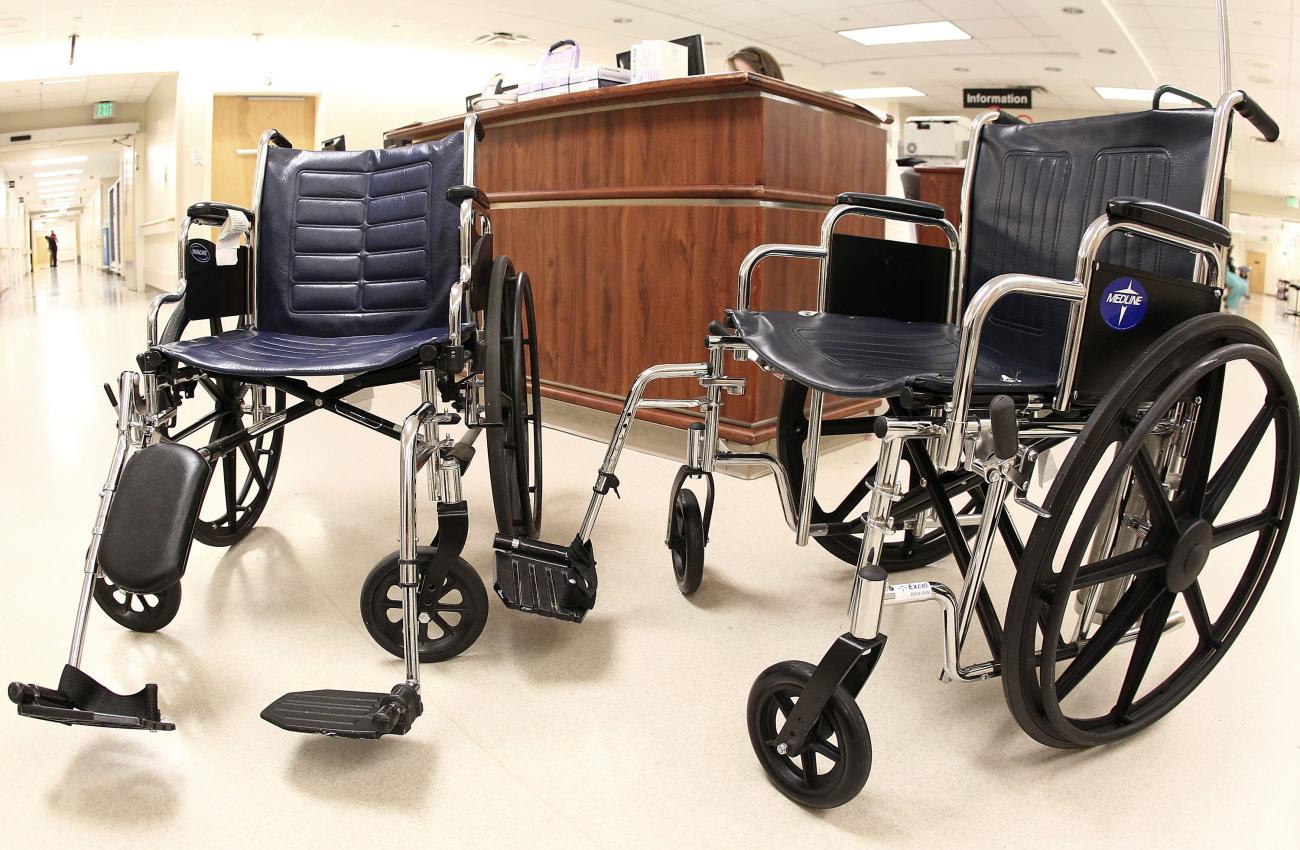
Tober says that her preliminary data also makes her wonder whether subsequent cancer risk for egg donors is higher than the fertility industry states. Doctors often quote risk based on data from IVF patients who take the same hormones as egg donors. But Tober argues that donors differ from IVF patients because they're younger and more responsive to hormones.
"A 22-year-old egg donor stimulated to produce 80 eggs . . . [who] ends up in hospital, [is] very different than a 42-year-old who might produce one or two eggs with the same dosage," she says.
In 2024, based on a six-year retrospective review of infertile women undergoing in vitro fertilization, the ASRM concluded that there's no link between fertility drugs and breast, colon, and cervical cancer. But the society did note that an increased risk of borderline ovarian cancer and thyroid cancer associated with fertility treatment was possible. The ASRM also reported a small—three additional cases per 100,000 person-years—increase in invasive ovarian cancer posttreatment for IVF patients but advised that the cause is unclear.
"It's difficult to determine whether this risk is related to underlying endometriosis, female infertility, or nulliparity," the organization concluded.
ASRM's analysis included a single retrospective survey of 429 egg donors that showed one case of breast cancer after 11 years. The ASRM states that the results were "reassuring regarding the risk of ovarian cancer in oocyte [egg] donors; however, further large studies are needed to ensure this risk is minimal."
Eyvazzadeh says the ASRM's guideline on cancer risk and fertility drugs applies to both IVF patients and egg donors because they take the same drugs. She warns donors that these hormones can also stimulate estrogen-sensitive conditions such as endometriosis, which affects fertility.
A National Registry and More Disclaimers
Eyvazzadeh agrees that it's time for a national egg donor registry to track long-term outcomes of egg donors. She says it's currently impossible to prevent donors from risking their health by donating too often.
"There's so much egg donor fraud where egg donors are bouncing around from egg bank to egg bank," she says, donating "12 to 15 times" to optimize their payout. She says a national registry would "prevent accidental incest from happening and control the number of donor cycles that an egg donor does." The more eggs a donor produces, the greater the profit egg banks using frozen eggs stand to generate.
Tober calculates that egg banks selling 12 batches of frozen eggs at $20,000 per five-egg batch from a high-producing donor would generate $240,000. However, the donor still receives a flat rate, no matter how many eggs she produces.
Levine says he's unaware of financial conflicts of interest among clinicians: "Doctors swear an oath to do no harm."
Kaylene Breeding, a six-time donor whose eggs resulted in twins born to a same-sex Israeli couple, is a moderator at the support group We Are Egg Donors. She needed surgery to remove patches of postdonation endometriosis that made her bladder stick to one of her ovaries, causing her pain with urination, sex, and exercise. Now she is torn between a hysterectomy to end her persistent pain and the remaining chance to conceive her own children.
Although Breeding was glad to help the fathers of her twins achieve parenthood, she is still paying the physical and emotional price.
"There's a lot to unpack in the egg donation industry. A lot of things need to be fixed," she says.
Breeding knows many egg donors have had positive experiences, but she wants clear disclaimers on fertility websites acknowledging the lack of specific research on donors. She says young women are being misled. "The media only has the good stories, framing it as a gift, as a lovely thing to do," she says.
Wei, who needed blood transfusions to recoup the 1.5 liters of blood lost after her ovarian artery was nicked during her retrieval, testified against the California bill that allows researchers to compensate egg donors. She calls it "an ethical conflict of interest for poor women" to risk their health for the benefit of science.
Twelve years after Wei spoke out, Tober calls it "unethical" that vulnerable young women are still being exploited by a profitable, largely unregulated fertility industry.
